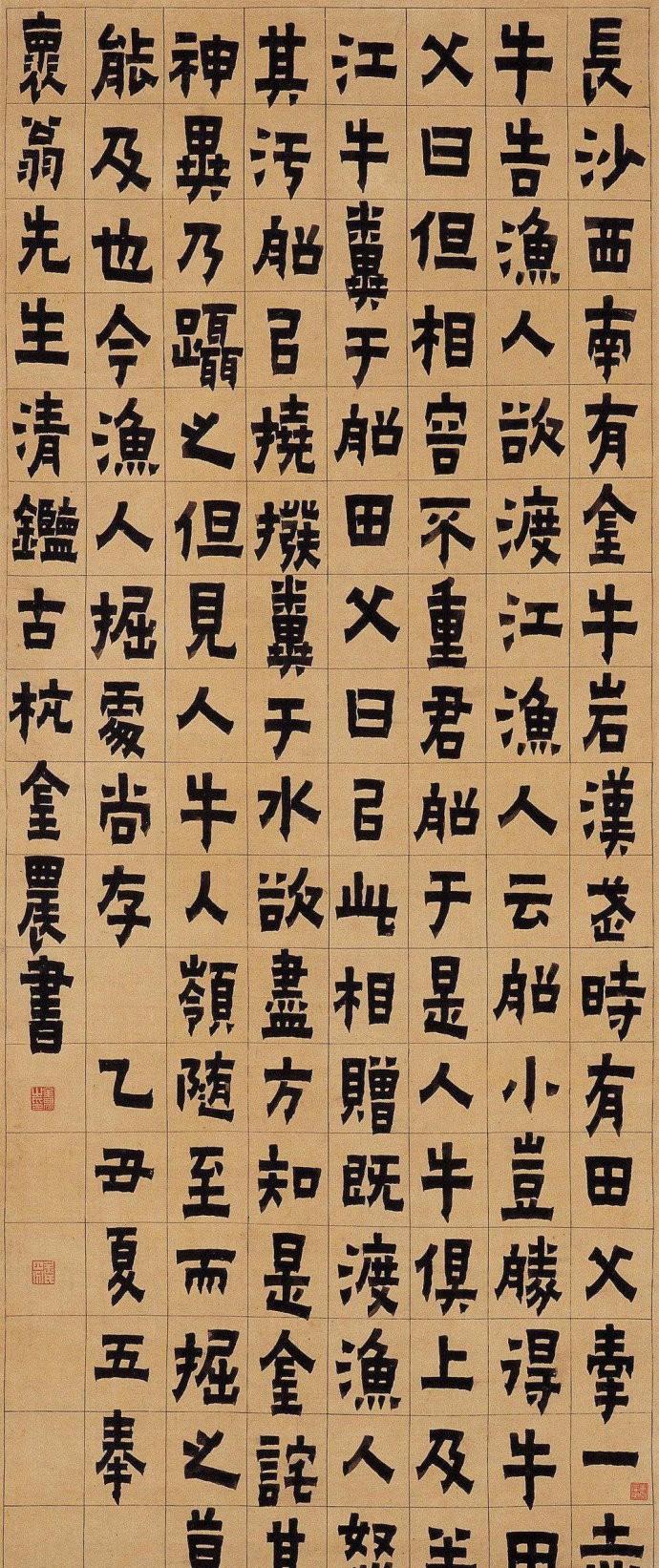
Jin Nong (1687-1764), a famous painter of the Qing Dynasty, the character Shoumen, the number Dongxin, there are many other names, there are Golden Bull, Lao Ding, GuQuan, Zhuquan, Qujiang Waishi, Ji Mei Lord, Lotus Body Resident, Longsuo Xianke, Shame Chun Weng, Shou Daoist, Jin Ji Jin, Su Fa Luo Ji Su Fa Luo (Buddhist classics "Su Fa Luo" is the Chinese "Jin" character, Su Fa Luo Ji Su Fa Luo is Jin Ji Jin), Xin Shu Liu Lang, Xian Tan Flower Sweeper, Jin Niu Lake Conference Elder, One Hundred and Two Yan Tian Rich Man, etc. Originally from Renhe (present-day Hangzhou), Zhejiang, he lived in Yangzhou for a long time.
I have never done anything in my life, I have a good sex to travel, and I have "footprints half the world". Curious and studious, he works in poetic calligraphy, poetry is ancient and peculiar, and is good at identification. The calligraphy created a flat pen style, which was both in italics and in the form of a subordinate body, sometimes called "lacquer book", and the collection of gold and stone characters was as many as a thousand volumes. In the first year of Qianlong (1736 AD), he recommended erudition and did not paint until he was fifty-three years old.
His paintings are strangely ancient, and he makes good use of light ink dry pens for floral sketches. The first painting of bamboo, followed by painting horses, painting Buddha statues, painting plums can be more original, one of the "Eight Monsters of Yangzhou". His representative works include "Dongcao TuhuaTu", "Empty Han Ru Sprinkle Map", "Lamei First BloomIng Map", "Jade Butterfly Qingbiao Map", "Tiexuan Loose Flower Diagram", "Bodhisattva Miaoxiang Diagram", "Qiongzi Qi Appreciation Map", etc., and his writings include "Winter Heart Poetry Banknote", "Winter Heart Essay", "Winter Heart Painting Plum Inscription", "Winter Heart Painting Horse Record", "Winter Heart Miscellaneous Works" and other books.